Bronze in perfect condition using lost wax.
Base: black marble with minor wear and a chip glued to one side of the base (see photo).
Signed: AMY, on the side. Artist referenced and listed, present in many museums...
Dimensions: Bronze: H47 x W40 cm - Base H14 x 28 x 21 cm.
Total height 61 cm - Weight 26 kg.
Biography:
Jean Barnabé AMY 1839/1907
Jean Barnabé Amy, born in Tarascon (Bouches-du-Rhône) on June 11, 1839 and died in Paris on March 24, 1907, was a French sculptor and writer. While keeping the sheep, he carved various objects from olive wood, small works admired by those around him. Adolphe Druon, mayor of the town, obtained a scholarship allowing the young artist to enter the École des Beaux-Arts in Marseille. In his first year, he won first prizes in sculpture, drawing and architecture, which allowed him to prepare for the competitive examination at the École des Beaux-Arts in Paris, where he entered in 1864 as a student of Jean-Marie Bonnassieux and Auguste Dumont.
He made his debut at the Salon in 1868, where he won his first medal for La Muse de Ponsard, a bas-relief presented to the town of Tarascon. He exhibited there every year until his death: Le Remords (Lunel), La Béatitude, Les Trois Félibres, Figaro (in collaboration with Émile-André Boisseau, they won first prize in the competition for the daily newspaper Le Figaro), Thou, Lamartine, monumental works, but also numerous terracottas, allegorical groups and more than 200 masks representing mythological or legendary subjects, including the Tarasque.
Participating in the Provençal Renaissance movement, vice-president of the Félibriges of Paris, he collaborated on various regional newspapers such as La Cornemuse, L'Écho de Provence, Lou Viro-Souleù, Le mois cigalier.
He was a friend of the Provençal Félibres Frédéric Mistral and Joseph Roumanille, then Alphonse Daudet and Paul Arène, whose portraits he painted. His literary talent was revealed in 1899 when he published Tarascon, by a Tarasconnais, a testimony on life in Tartarin's homeland in the last century.
He describes the riches of the city: monuments, public places, festivals and traditions, perceived by a sculptor and poet passionate about his hometown.
Died on March 24, 1907, he is buried in Tarascon and on his grave a friend planted an olive tree which even today is only pruned by a félibre. Most of these works are preserved in the museums of Avignon, Montpellier, Arles and Marseille.
Author of the Monument to the Drum of Arcole erected in Cadenet in 1894, he notably composed a series of mythological, religious or legendary masks, of angels or monsters.
Museums:
Aix-en-Provence, Musée du Vieil-Aix: Mistral, bronze bas-relief. Arles, Musée Arlaten: La Tarasque, 1883, terracotta. Avignon, Musée Calvet: Frédéric Mistral; Joseph Roumanille; Théodore Aubanel, 1875. Cadenet: Monument to the Drummer of Arcole, 1894. Lunel: Remorse, 1877. Marseille, Museum of Fine Arts: La Tarasque, 1883, polychrome pewter bas-relief; background of Masks and Portraits of legendary or mythological figures. Paris: National Library of France, Richelieu site: Jean-Antoine Letronne, marble bust. Town Hall, facade: Thou, stone statue. Tarascon: La Tarasque, bronze. Tarascon Theater, pediment: a lyre supported by two angels. The Human Comedy: The Human Comedy is the title under which Honoré de Balzac brought together a collection of more than ninety works — novels, short stories, tales and essays — of realistic, romantic, fantastic or philosophical genres, and whose writing spans from 1829 to 1850. With this work, Balzac wanted to make a "natural history of society", systematically exploring social groups and the workings of society, in order to paint a vast fresco of his time likely to serve as a reference for future generations.
Sold with Invoice and Certificate.
Bronze visible at our gallery in L'Isle sur la Sorgue (France), on weekends.
Free shipping for France. On estimate for abroad















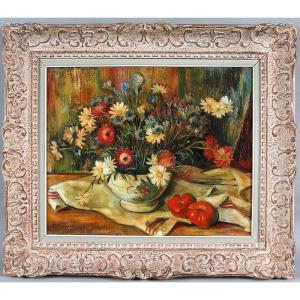
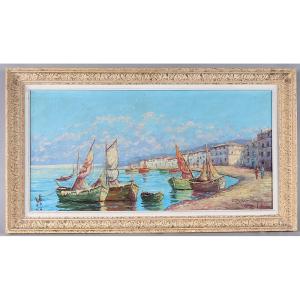








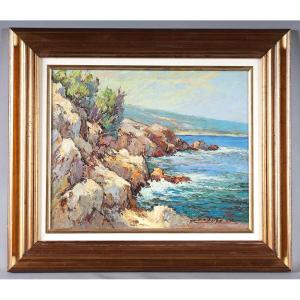







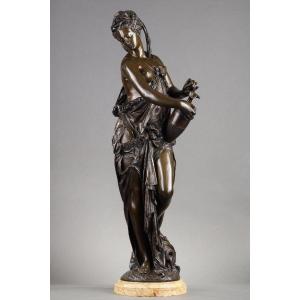
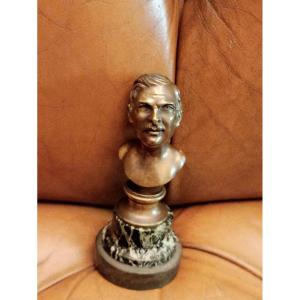



 Le Magazine de PROANTIC
Le Magazine de PROANTIC TRÉSORS Magazine
TRÉSORS Magazine Rivista Artiquariato
Rivista Artiquariato